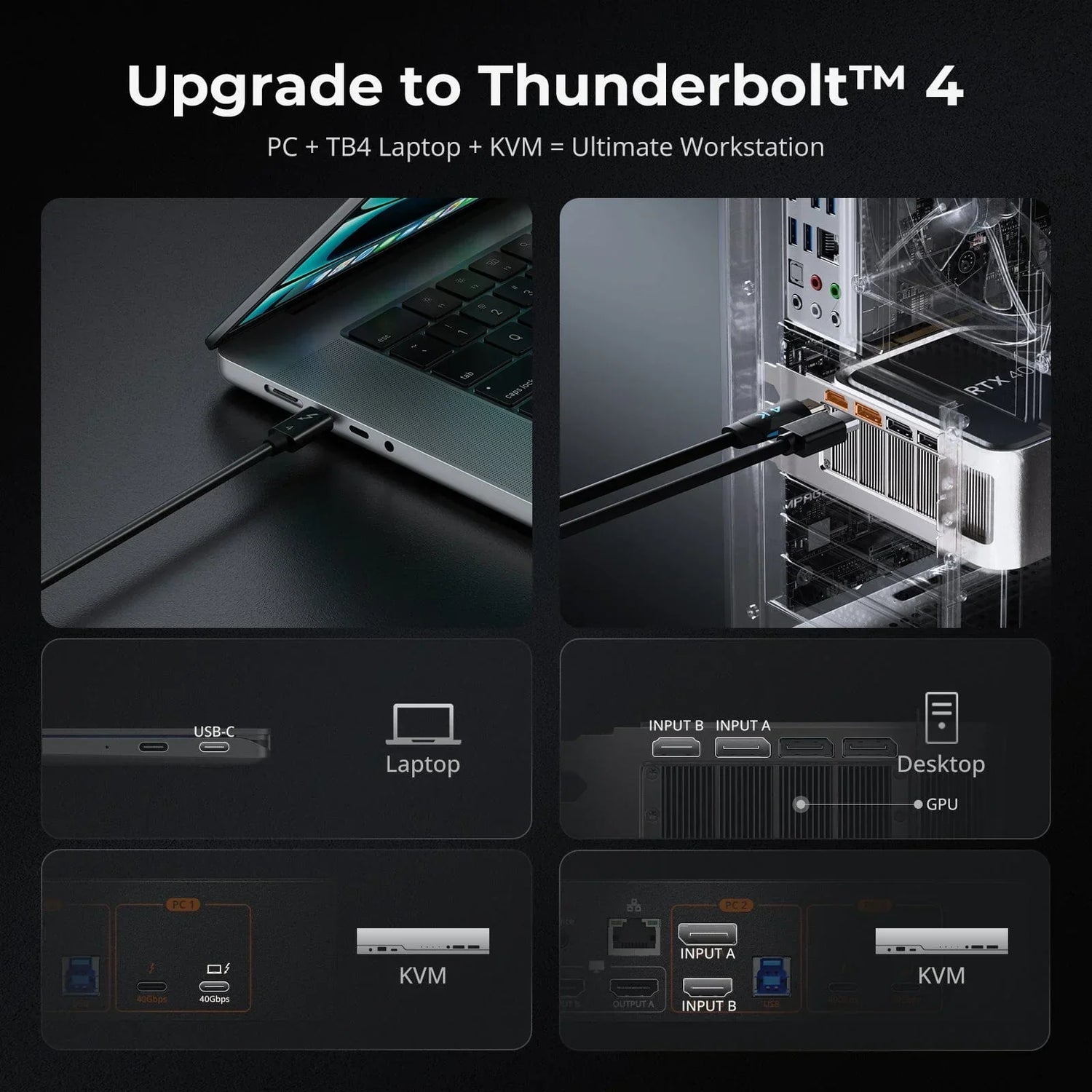In today's highly multitasking work environments, multi-monitor configurations have become one of the key methods to enhance work efficiency and productivity. DisplayPort MST technology brings more flexibility to multi-monitor setups. The application scope of MST technology covers various fields, from professional graphic design and video editing to financial trading, benefiting from its extended workspace and enhanced visual experience. For instance, in financial trading, a multi-monitor setup enables traders to monitor multiple markets simultaneously, obtaining real-time information to make wiser decisions.
The Working Principle of MST Technology and "Daisy Chain" Connection
Before delving into the working principle of MST technology, let's understand the concept of "Daisy Chain." In an MST configuration, multiple monitors are connected to a source device (such as a laptop or PC) that supports MST through a "Daisy Chain" connection. In this setup, the first monitor directly connects to the source device's DisplayPort output port, while subsequent monitors connect to the input port of the preceding monitor's DisplayPort output port. This connection method forms a "Daisy Chain" among multiple monitors, enabling data transmission and extension.
MST technology divides a single video signal into multiple streams (or channels), which are independently displayed on connected monitors. Each monitor displays a portion of the content, allowing each monitor to carry part of the overall image and creating a larger, more immersive workspace. This "divide and conquer" approach ensures display quality for each monitor and promotes seamless collaboration among multiple monitors, enhancing multitasking capabilities.
"DisplayPort MST technology redefines multi-monitor setups for modern work environments. By linking monitors through 'Daisy Chain' connections, users create expansive workspaces that enhance productivity. This technology's influence spans industries, offering professionals in different fields the ability to achieve more with increased efficiency." — from <Tom's Guide>
The Combination of Display Stream Compression (DSC) and MST Applications
When delving deeper into MST technology, it's essential to mention Display Stream Compression (DSC) technology. As mentioned earlier, DSC technology achieves efficient image transmission through data compression, reducing the required bandwidth for transmission. When DSC technology is combined with MST technology, its advantages become even more significant. Transmitting data for multiple monitors requires a relatively large amount of data, and DSC technology efficiently compresses this data to reduce the transmission burden. This not only lowers the required bandwidth for transmission but also ensures image quality on each monitor. Therefore, combining MST and DSC technologies in building high-resolution, high-refresh-rate multi-monitor configurations can provide smoother display effects.
The Role of USB-C and Considerations Between DisplayPort and HDMI
It's worth noting that some USB-C ports or Thunderbolt interfaces support DisplayPort MST due to their DP Alt Mode feature, allowing them to connect multiple monitors when supported. However, users need to be cautious when choosing a connection method, especially when devices don't support MST. The article mentions that devices like MacBook only support DP SST, meaning they don't support DisplayPort MST. Therefore, ensuring compatibility and support is crucial when purchasing monitors and devices.
The Synergistic Application of KVM Switches and DisplayPort MST Technology
In modern work environments, Keyboard, Video, and Mouse (KVM) switches have become essential tools for improving work efficiency and multitasking capabilities. KVM switches enable users to manage multiple computers through a centralized console, avoiding frequent device switching and reducing physical device occupancy. Combining KVM switches with DisplayPort MST technology can further enhance work efficiency in multi-monitor setups.
In this configuration, users can seamlessly switch control between multiple computers using a KVM switch while utilizing DisplayPort MST technology to extend multiple monitors into a vast workspace. For example, in financial trading, a trader may need to manage multiple computers to monitor different markets, and a multi-monitor setup provides a more intuitive and efficient way to display information. Through a KVM switch, a trader can control multiple computers using a single keyboard, mouse, and monitor, while DisplayPort MST integrates multiple monitors into a seamless workspace, allowing traders to manage complex trading environments more easily.
Technical Features and Considerations When Choosing KVM Switches
However, to fully harness the synergistic advantages of KVM switches and DisplayPort MST technology, selecting the right KVM switch that suits one's needs becomes crucial. When purchasing a KVM switch, users need to consider multiple technical features and factors. Firstly, the KVM switch should have sufficient bandwidth support to ensure high-resolution and high-refresh-rate image transmission. Additionally, KVM switches should support various input and output interfaces to accommodate different types of computer and monitor connections. Simultaneously, the switch's switching speed, stability, and compatibility are also factors to consider.
When choosing a KVM switch, users should also pay attention to whether it supports DisplayPort MST technology. Some high-end KVM switches have begun to support DisplayPort MST, enabling users to manage multiple monitors and computers more flexibly. Choosing a KVM switch that supports DisplayPort MST ensures users enjoy a better work experience in multi-tasking environments, whether in financial trading, graphic design, or other fields.
In Summary
DisplayPort MST technology offers users the opportunity to build efficient and powerful multi-monitor work environments. Through "Daisy Chain" connections, MST technology allows users to collaboratively work with multiple monitors to address increasingly complex tasks. When combined with Display Stream Compression (DSC) technology, multi-monitor configurations not only provide higher resolutions and refresh rates but also ensure smooth transmission and high-quality image display. When selecting a connection method, users need to consider device compatibility and requirements to construct the most suitable multi-monitor work environment.




